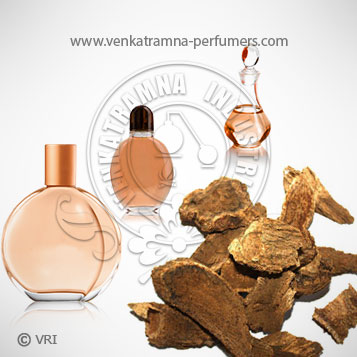
| Botanical Name | Sassuriea costus |
| Common Name | Ostus Root Oil, Costus Oil, Costus Root Essential Oil, Costus Root Absolute, Costus Oil India. |
| Country of Origin | India |
| Solubility | soluble in alcohol, insoluble in water |
| Specific Gravity | 0.970-1.035 @ 25°C |
| Optical Rotation | (+10°)-(+30°) |
| Refrective Index | 1.5000-1.5700 @ 25°C |
| PlantPart | Root |
| Bland With | Costus Root Essential Oil blends well with Patchouli, Opopanax, Ylang-ylang, and any oil with oriental and floral fragrances. |
| CAS No | 8023-88-9 |
| Flash Point | 120 °C |
| Extraction Method | Steam Distilled |
Saussurea costus (Falc.) Lipschitz, syn Saussurea lappa C.B. Clarke, one of the best-known species within this genus, is commonly known as costus. Due to the remarkable biological activity of S. costus and its constituents it will have an appropriate place in various systems of medicines all over the globe. It grows on the moist slopes of the Himalayas at altitudes of 8000-12000 feet in Kashmir, Himachal Pradesh, Lahul Spiti, etc. It both grows wild and is cultivated. The roots have a long history of medicinal and aesthetic use in Tibet, India and other mountain regions.It was a prized item of commerce from the earliest times as the roots were reputed not only to have great curative properties but also wonderful aromatic qualities much prized in perfume creations of the ancient world. It not only was appreciated as an oil but as a prime ingredient in incense. In Ayurveda the name Kushta refers to an ancient Vedic plant god mentioned in the Atharvaveda as a remedy for takman, the archetypal disease of excess or jvara (fever). In ancient India Kushta was a divine plant derived from heavenly sources, growing high in the Himalayas, considered to be the brother of the divine Soma. In Ayurveda Kushta is a rasayana for Vata, helping to normalize and strengthen digestion, cleanse the body of toxic accumulations, enhance fertility, and reduce pain.
The root has been used for millennia in India and China for digestive complaints, respiratory conditions, and as a stimulant. It has also been used to combat infections including typhoid and cholera
Color : Yellow to brownish yellow viscous liquid with an extremely tenacious odor,
Aroma : Costus Root Essential Oil has an extremely tenacious odor reminiscent of old precious wood. The odor has been compared to that of wet dog, human hair, or animal fur.
Aplotaxene. Costus Acid, Costol, Lactone, Dihydro Costus lactone.
The roots have an acrid, strong and sweet aromatic odour and bitter taste with neutral potency. The root of this plant is credited with anodyne, anti-arthritis, aphrodisiac, astringent, stimulant, digestive, diaphoretic, deodorant, antiseptic, diuretic, emmenagogue, expectorant, febrifuge, spasmodic, vermifuge and tonic properties. In India, it is cultivated in the Himalayas as a medicinal plant and for its use in perfumery and for preserving furs. It is used singly or as an ingredient in the drug formulations prescribed for the treatment of cough, bronchitis, colic, dental trouble, diarrhoea and dysentery, liver dysfunction, pulmonary disorders, fever, flatulence, hair wash, headache, hysteria, chest complaints, nervous disorders, irregular menstrual problems, promoting urination and rheumatism. The plant is also believed to help prevent greying of hair. Dry roots (Kuth, Costus) are strongly scented and yield an aromatic oil used in making insecticides. The roots contain an alkaloid, ‘saussurine’, which is medicinal. It is used in skin diseases, asthma, high blood pressure and stomach ailment. Also used as carminative, prophylactic and sedative. Dry roots constitute the drug ‘Saussurea’. In Kashmir the roots are used to protect woollen fabrics. Kuth is also distilled for its essential oil. Essence of Costus Oil In foods and beverages, costus oil is used as a flavoring component. In manufacturing, costus oil is used as a fixative and fragrance in cosmetics. COMMON USAGE • Aids immune system • Assist digestion • Skin health • Ointment • Prevent cholera • Cure ulcers • Speed up healing process